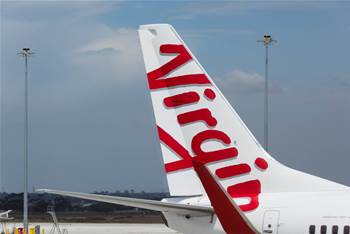Virgin Australia is driving analytics into every corner of its revived business, creating a playbook for every business unit that can be used to drive growth and profitability as the airline sector recovers.
Head of the analytics centre of excellence (COE) Paul Tran told the SAS Global Forum that the airline has elevated analytics to a groupwide function, supported by a three-year technology agreement with SAS.
Virgin Australia managed to exit voluntary administration at the end of last year after securing the backing of Bain Capital. It has since started to rebuild internal functions, including IT.
Before heading up the newly-centralised analytics function, Tran ran data science for the Velocity Frequent Flyer program.
There was still work to do on Velocity even as the airline’s fleet was grounded due to the pandemic, Tran noted, with Virgin keen to maintain contact with customers.
The lack of flights also provided an opportunity to revamp analytics and to broaden its scope, to help Virgin Australia chart a path out of administration and then to profitably take to the skies once again.
“Up until now we’ve been running 110 miles an hour so we’re always on the run and doing stuff, but it was actually a good opportunity,” he said.
“Now that the business was temporarily shut down, we needed to start a plan for what we needed to set up so that when the business recovered we were at the forefront to drive the business.”
Tran said the intention of the COE was to create a flight plan-like document for each business unit “so then when the borders open up or when we can start flying again, we know this is the playbook.”
“The airline is always focused on a flight plan, so when a pilot gets on a flight they know exactly what they need to do and where they need to go,” Tran said.
“That’s how we need to operate our individual business units. What is our ‘flight plan’ that we need to get [the unit] ready so that when business is coming back up, these are the things that we need to execute?”
Modelling the return of air travel
Tran said that Virgin Australia is also using advanced analytics for everything from route and yield optimisation, to predictive maintenance and high-value customer personalisation.
He said the COE had already built a profitability model that is accurate down to an individual customer level.
“This is something that we’ve never built before and in just three months we were able to build the whole comprehensive profit model, activity-based costing model, at customer level,” he said.
“This is where we know who our valuable passengers are, what demand looks like, and how we can open up routes to maximise that capacity and demand to drive the most revenue and most profit for us. That’s one example.”
The COE had also built similar tools to manage the needs of corporate customers.
The idea of running analytics down to an individual customer level permeates several aspects of the revamped analytics operation.
“The typical airline would very much look at travel demand from a market perspective,” Tran said.
“What we, at Virgin Australia, do now is look at it from a customer demand perspective, so we know who our valuable and our engaged members or guests are, and where they want to go, so we want to plan around that.
“Then, we also want to plan the experience for those trips to make sure it’s a memorable trip. What’s the right proposition or product feature that we should wrap around that experience, so it’s a great experience and return on investment for all?
“That’s where analytics plays a key role.”
Tran said the company had “barely just scratched the surface” on personalisation, particularly down to the individual customer level.
“It’s not just [about] a group of members anymore but [about targeting] an individual member or guest,” he said.
“We obviously know what they’ve done in the past and what their preferences are, and how they experienced us in the past.
“What we want to do is leverage that and propose new personalisation at individual members’ level.”
Beyond the customer
At the same time, Tran indicated there is wide scope to deploy predictive analytics into other parts of the company’s operations.
One example is exploring “how we help the airline think about parts replacement and the decay of those parts and the scheduling” of maintenance, he said.
There was also potential to use analytics for capacity and route optimisation, and to track business metrics and alert executives to any challenges that were predicted to arise.
“We’ve just scratched a little bit on each of those business units to get a flavour and a ‘case study’ [use for analytics],” Tran said.
“We know there are a lot of big business units in Virgin that we haven’t even touched.”
Tran added that Virgin Australia’s three-year deal with SAS for the advanced analytics platform software came on the back of a substantial existing relationship with the vendor.
“We couldn’t operate on our old software,” Tran said.
“We needed to modernise our tools. We needed this new investment to get us there, to transform data to insight at a much faster speed.
“We know what we can do with [SAS] over the three-year horizon. We went through a very thorough business case.
“It’s all about [being] at the forefront of this digital transformation where data is the enabler for revenue generation and customer experience.”


























